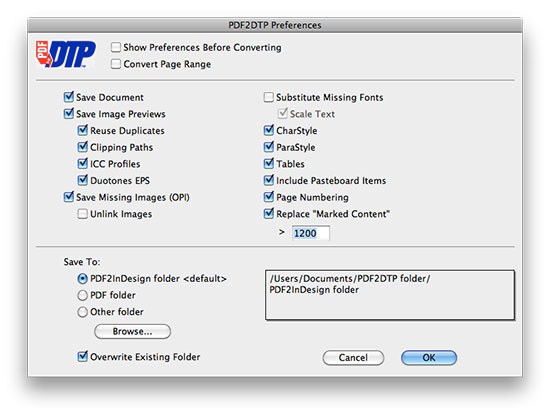Prinergy accepts PostScript and PDF files that contains OPI links and merges in high-resolution images following an image search path defined by selecting Image Search Path from the Job menu in Job Manager. The parameters for OPI are set in the Fonts and Images section of the refine process template, and OPI is resolved as part of that process. Remove OPI 2.0 comments from the PDF file, place the PDF file into InDesign, and then print the document. To remove OPI 2.0 comments, do one of the following tasks: In Adobe Acrobat, manually remove the OPI 2.0 comments and then re-create the PDF file. In Acrobat, use Enfocus Pitstop to remove the OPI 2.0 comments. Use OPI 1.3 comments.
Making the right decision is the biggest challenge that designers, managers, and innovators face especially when there can be more than one possible choice to select from and multiple factors that need to be evaluated to make the right decision. The Decision Matrix (also known as the Grid Analysis and Pugh Matrix Analysis) allows you to achieve this target by providing a measurable method that allows you to select a specific choice between many based evaluation values. For example, if you would like to buy a laptop and need to ensure you are selecting the right product among many based on a number of criteria that reflect the required features that meet your needs and daily usage. In this example and similar cases, the Decision Matrix can provide a quick and easily method to identify the right device to buy.
Previously, we explored the Decision Tree as a tool for decision-making, however, it needs time and knowledge to evaluate the weighted rates of each choice and doesn’t focus on the features associated with each choice. This later method is more suitable for complex decisions that involve multiple factors and stakeholders. The Decision Matrix is defined by the Business Directory as:
“a table used in evaluating possible alternatives to a course of action.”
The Decision Matrix depends on creating a weighted value for each choice and the sum of all these values enables users to compare the highest rated choices. The tool depends on creating a Decision Matrix table where the rows represent the criteria or the features that need to be evaluated, while the columns represent the different choices. You can download the Designorate Decision Matrix template in Excel spreadsheet format.
Creating the Decision Matrix
In this example, we will learn how to create a Decision Matrix to evaluate a number of innovative ideas and make a decision about which idea is viable, can be selected as a new project and will lead to a successful product for the company. In this example, we will name the ideas (Idea 1, 2,3…etc.), and set the evaluation criteria to the following:
- Competency refers to how the new product will compete in the market
- Cost refers to the cost required to adopt the new idea
- Viability determines if the idea is applicable in real life
- Desirability refers to how the consumer will accept and interact with the new idea
- Alignment refers to how the idea aligns with the company production strategy
Step 1
Create a table where the rows represent the evaluation criteria above and the columns include the choices. In this example, the choices will be Idea A, B, C, and D.
Establish a rating scale for each criterion. The rating should range from 1= less importance and 5= high importance. Then, add these rates under each criterion in the table. As shown in the figure below, the competency has given a rating of 3, cost= 4, viability=5, desirability= 4, and alignment=2.
Step 2
Now, you need to rate each idea based on each criterion. The rating is again from 1 to 5. The 1 means that the idea is least qualified based on the chosen criteria. 5 means that the idea is very qualified in terms of the selected criteria. For example the Idea A was rated 1 based on the competency, which means that the idea is less desirable in terms of market competency.

Step 3
Now, we need to calculate the weighted score for each idea based on each criterion. The weighted value is a result of the multiplication of the criteria rank and the idea rank as demonstrated below:

Idea A weight = criteria rank X idea score
The total weighted score should be written in the last column as seen in the figure below. Then, the ideas are prioritized from the highest score to the lowest score. In this example, Idea A presents a good opportunity for the company to achieve innovation in the market. Based on the final result, Idea B is more likely to achieve success in the market, while Idea C is the least idea to achieve market success.
Opi Indesign 2020
In some situations, the final results may vary from the expected choices. In this case, the rating for each criterion should be reviewed and revised as necessary.
Opi Indesign 2020

Opi Indesign 2019
The Decision Matrix presents an easy and measurable method to take decisions based on the rating and scoring of different criteria and compare the different choices based on these criteria. The above template allows you to automatically calculate the weighted rank of each idea and decide which idea to select. This template is based on an Excel spreadsheet document. The tool depends more on practicing it. It may take some time at the beginning to adopt it as part of your daily habits, then it should become easy to use in different situations.
